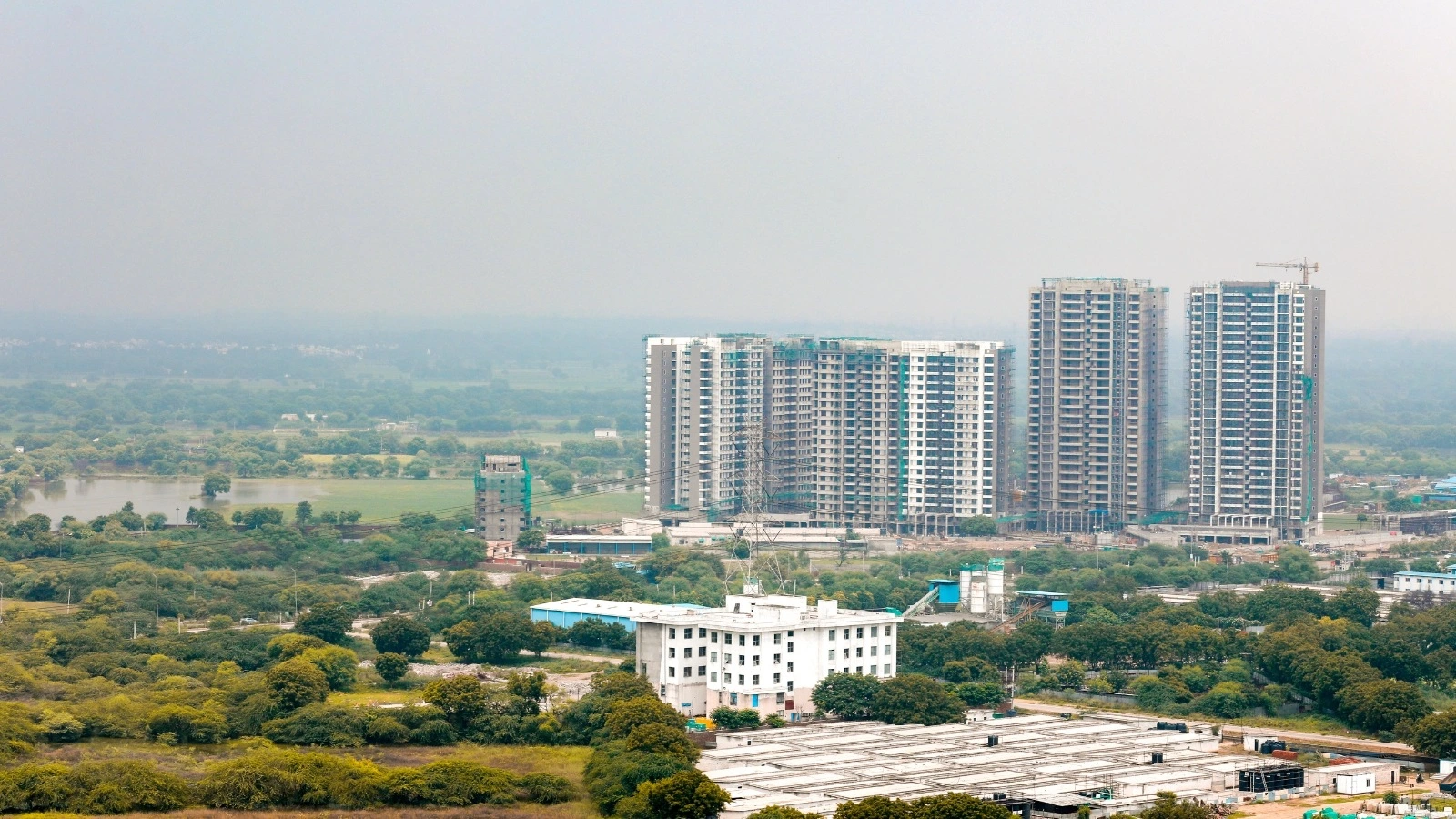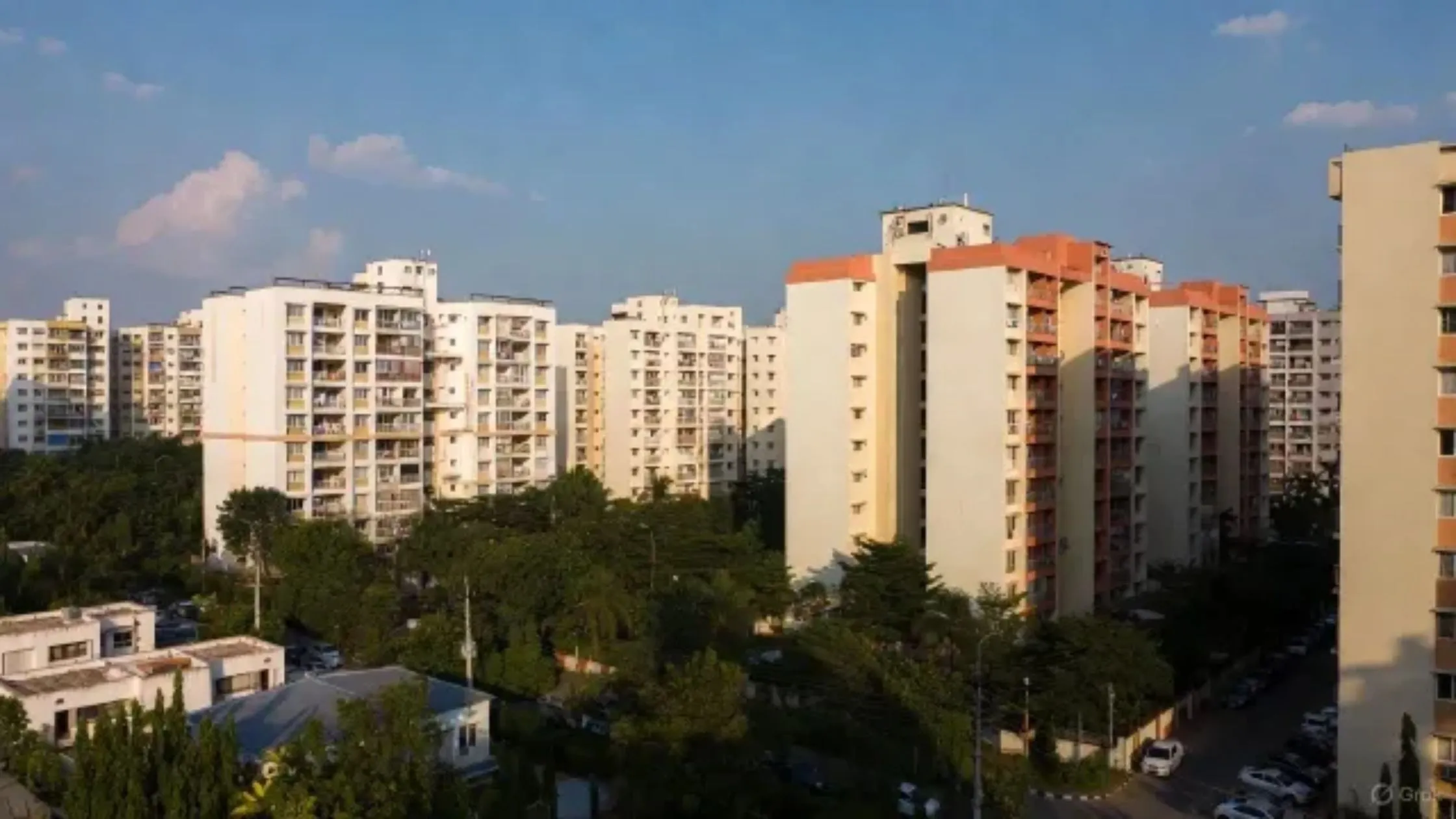Table of Content
India's real estate sector remains highly dynamic, reflecting the evolution and changes of the economy and demographics within the country. The first quarter of 2025 brought a surprise twist about housing sales in the 15 largest Tier 2 cities in the country. There was a drop in unit sales however, the sales value continued to rise. In this paper, we examine these aspects and trends to provide a full awareness of the bigger picture and the larger implications for the sector.
Overview of Q1 2025 Housing Sales of Tier 2 Cities
As per the latest report by PropEquity, the real estate sales in Tier 2 cities decreased by 8% in terms of units sold, from 47,378 units in Q1 2024 to 43,781 units in Q1 2025. Sales value, however, increased by 6%, from ₹38,102 crore to ₹40,443 crore during the same time frame from a year ago. This diverging trend emphasizes the changing nature of India's housing market.
Also Read: Maharashtra Government Approves Dharavi Redevelopment Master Plan
Cities with Growth in Housing Sales
Lucknow: Leading the Surge
- Lucknow registered a 25% growth in units sold, rising from 1,040 units in Q1 2024 to 1,301 units in Q1 2025.
- Factors such as improved infrastructure, thriving IT hubs, and increasing demand for organized living have driven this growth.
Coimbatore: A Close Contender
- Coimbatore reported a 21% growth in unit sales, showcasing strong demand for both affordable and premium housing options.
- The city’s industrial base and emerging IT sector contributed to this positive trend.
Other Cities with Growth
- Gandhi Nagar saw an 18% increase, benefiting from state-led urban development initiatives.
- Mohali recorded a modest 2% growth, supported by its proximity to Chandigarh and rising employment opportunities.
Cities Experiencing Decline in Housing Sales
Visakhapatnam: The Steepest Decline
- Visakhapatnam experienced a sharp 37% drop in units sold, making it the worst-performing city in Q1 2025.
- Factors include limited new inventory and subdued investor interest.
Jaipur and Bhopal
- Jaipur reported a 32% decline, while Bhopal saw a 31% fall in housing sales.
- Both cities face challenges such as oversupply and sluggish demand from end-users.
Nagpur and Other Cities
- Nagpur registered a 21% decline, highlighting the need for more diverse housing options.
- Cities like Ahmedabad and Goa, while experiencing minimal declines (1%), indicate resilience due to stable demand.
Sales Value Trends: A Brighter Picture
Coimbatore: Leading in Sales Value Growth
- With a 52% increase, Coimbatore’s sales value reached ₹1,120 crore in Q1 2025.
- The city’s growing demand for premium properties has contributed significantly to this rise.
Lucknow and Gandhi Nagar
- Lucknow recorded a 48% growth in sales value, driven by high-value property transactions.
- Gandhi Nagar saw a 36% increase, underscoring the impact of urbanization and economic activity.
Other Cities Showing Growth
- Cities like Mohali, Goa, Ahmedabad, Bhubaneswar, and Kochi reported moderate increases, ranging from 5% to 17%.
Cities Facing Declines in Sales Value
- Visakhapatnam again topped the list with a 35% drop in sales value, reflecting its challenges in attracting high-value investments.
- Vadodara and Nagpur recorded the smallest declines at 1% each, demonstrating relative stability.
Factors Influencing Q1 2025 Trends
Macroeconomic Indicators
- The Reserve Bank of India’s 50bps repo rate cut since January 2025 has made home loans more affordable, potentially boosting future demand.
Supply Constraints
- A lesser supply of new inventory in Tier 2 cities during Q1 2025 contributed to the decline in unit sales.
Changing Buyer Preferences
- Increased demand for organized living spaces and preference for hometown investments among migrants have shaped the market dynamics.
Growth in Employment Opportunities
- Emerging IT hubs and manufacturing centers in Tier 2 cities are attracting professionals, spurring housing demand in select regions.
Also Read: Prestige Estates Joins Hands with Valor Group for ₹4,500 Crore Office Project in Mumbai's Andheri
Implications and Outlook for Tier 2 Housing Market
- Resilience in State Capitals: Cities like Lucknow and Gandhi Nagar highlight the role of infrastructure and economic activity in driving growth.
- Demand Recovery Prospects: With further repo rate cuts expected, housing demand may rebound in the coming quarters.
- Need for Strategic Development: Addressing oversupply and diversifying housing options will be key to sustaining growth.
Conclusion
The Q1 2025 Housing Sales of Tier 2 Cities present a mixed narrative. While unit sales declined, the growth in sales value underscores the evolving nature of buyer preferences and market dynamics. As economic factors stabilize and demand for urban living strengthens, Tier 2 cities are poised to play a pivotal role in India’s real estate landscape. Investors, developers, and homebuyers must align with these trends to unlock the full potential of this growing segment.
Follow AquireAcers Whatsapp Channel to Stay Updated With The Latest Real Estate News

_11zon_1748848852.webp)



_1765522271.webp)

Ans 1. Housing unit sales in Tier 2 cities dropped by 8%, but sales value increased by 6%, reflecting a shift toward higher-value properties and evolving buyer preferences.
Ans 2. Lucknow: 25% growth, driven by infrastructure improvements and IT sector expansion. Coimbatore: 21% growth, supported by industrial and IT sector developments. Gandhi Nagar: 18% growth, influenced by urban development initiatives. Mohali: 2% growth, due to proximity to Chandigarh and rising job opportunities.
Ans 3. Visakhapatnam: 37% decline due to limited inventory and reduced investor interest. Jaipur and Bhopal: 32% and 31% declines, respectively, caused by oversupply and sluggish demand. Nagpur: 21% decline, highlighting a lack of diverse housing options.
Ans 4. Despite a decline in unit sales, sales value grew in many cities, led by: Coimbatore: 52% growth, driven by premium housing demand. Lucknow: 48% growth, fueled by high-value transactions. Gandhi Nagar: 36% growth, reflecting urbanization and economic activity.
Ans 5. The decline in sales value is attributed to subdued investor interest and limited high-value property transactions.
Ans 6. Economic Factors: A 50bps repo rate cut by the RBI has made home loans cheaper. Supply Constraints: A limited supply of new inventory in Tier 2 cities impacted unit sales. Changing Preferences: Increased demand for organized living and investments in hometowns by migrants. Employment Growth: Emerging IT hubs and manufacturing centers spurring housing demand.
Ans 7. Strategic Planning: Address oversupply issues and diversify housing options to meet varied buyer preferences. Focus on State Capitals: Cities like Lucknow and Gandhi Nagar showcase resilience due to infrastructure and economic growth. Prepare for Recovery: Expected further repo rate cuts could boost demand in upcoming quarters.
Ans 8. Improved infrastructure attracts investments, creates job opportunities, and enhances connectivity, driving demand for housing in cities like Lucknow and Gandhi Nagar.
Ans 9. Emerging IT hubs and industries in Tier 2 cities are attracting professionals, increasing demand for organized and affordable housing options.
Ans 10. These cities face challenges like limited new inventory, oversupply, and lack of diverse housing options, leading to reduced buyer interest and declining sales.